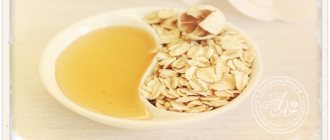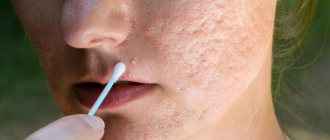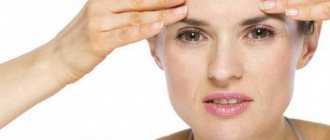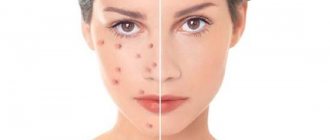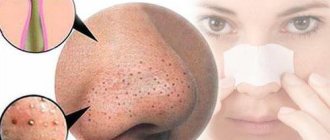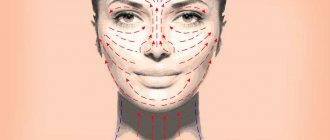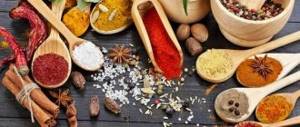The use of hydrogen peroxide for the face has been known for a long time. It is especially useful for teenage problem skin. Peroxide is excellent at drying out acne and reducing sebum production. Girls who want to get rid of freckles often resort to using this product. Ladies over 50 use it to lighten age spots. Everyone finds use for this controversial product. But how does peroxide actually work? And how to make its use as safe as possible?
Effect of hydrogen peroxide
Despite the fact that peroxide is quite widely used in cosmetology, its use is unsafe and not harmless for the skin. Hydrogen peroxide is an aggressive substance. It is essentially water with an extra oxygen atom attached to it. Upon contact with the skin, the compound is destroyed and an oxidation reaction occurs. By combining with dirt, sweat and germs on the surface of the dermis, oxygen softens them and makes them easier to remove from the face. But it also results in microscopic burns that make the skin look whiter and clearer.
special instructions
When fighting wrinkles with hydrogen peroxide, it is necessary to take into account some nuances. Here are the main ones:
- For application to the skin of the face, you can use only a three percent solution of hydrogen peroxide. More concentrated products may cause severe burns.
- To obtain several positive effects at once (whitening, cleansing, giving skin elasticity), it is better to include peroxide in masks and scrubs.
- The prepared mixture for the face should be applied immediately, since after 15-20 minutes the drug completely loses its properties.
Use the product correctly, because peroxide is a drug that can cause negative reactions in the body!
Indications and contraindications
As mentioned above, hydrogen peroxide requires very careful handling, as it can cause serious damage to the skin in the form of a chemical burn. Also, the use of this substance is contraindicated for people who have:
- individual intolerance;
- excessively dry, flaky skin;
- skin diseases (psoriasis, eczema);
- damage and injury to the skin;
But who should make masks with peroxide are people:
- with enlarged pores;
- with oily skin type;
- with skin problems such as acne and acne;
- with freckles and age spots.
Contraindications
Peroxide is a drug that is an antiseptic. It should not be used uncontrollably or frequently. Whitening must be carried out strictly within time, otherwise, instead of eliminating defects, it can cause skin damage and scar formation .
The substance is not suitable for everyone. It is prohibited to use:
- with open wounds on the face,
- people with signs of eczema,
- with severe swelling.
The drug is not recommended for whitening very sensitive and dry skin. If there is flaking, redness or irritation, peroxide will worsen the situation and make the problem worse.
You cannot use the product if you have an individual intolerance. To exclude an allergic reaction, you need to drop a couple of drops of peroxide on your wrist. If there is no redness on the skin within half an hour, the drug is suitable for treatment.
Safety precautions when working with peroxide
To prevent hydrogen peroxide from causing serious damage to the dermis, you need to work with it very carefully. It is important to follow the following safety rules.
- Use a 3% solution as higher concentrations can cause serious burns to the skin.
- Before using hydrogen peroxide, test your reaction to it. This can be done on any small area of skin - on the crook of the elbow or the back of the hand.
- Peroxide in its pure form can only be used spot-on - on freckles, pimples, blackheads.
- You can't make masks with peroxide too often. The optimal course of procedures is once a week for a month. Next you should take a break for 2-4 weeks.
- Those with dry skin should avoid using peroxide or soften its effect with components such as egg yolk, fatty oils, honey, etc.
- Do not allow peroxide to get into your eyes or mucous membranes. It is also not advisable for this product to come into contact with the delicate skin of the eyelids and lip area.
If you follow all the recommendations, the procedure using hydrogen peroxide will become almost completely safe and very effective. Peroxide successfully fights rashes, cleanses the skin and makes it brighter, smoother, and more beautiful.
Brightening peeling
You can buy badyagi powder at the pharmacy along with peroxide. The freshwater sponge contains substances that help exfoliate the top layer of skin and lighten pigmentation.
Peeling based on peroxide and sponge increases blood circulation, removes dead skin cells, deeply cleanses pores from blackheads and lightens signs of inflammation. Before the procedure, you should make sure that there are no abrasions, wounds or irritation on the skin. The imposition of composition in such a situation is unacceptable.
- You need to measure out half a tablespoon of badyagi powder.
- Pour a spoonful of hydrogen peroxide into it and stir.
- You should get a homogeneous mass similar to cream.
- If the composition is too thick, you can add a little more peroxide.
- Apply the product to cleansed skin, paying special attention to problem areas.
- Leave for 2-3 minutes and rinse with plenty of warm water.
To soothe your face after intense exposure, you need to lubricate it with moisturizer.
Using peroxide at home
Face masks
Curd mask
Take:
- cottage cheese (or heavy cream) – 1 spoon;
- hydrogen peroxide – 5-8 drops.
Mix the ingredients and apply them on your face. To prevent the cream from dripping, you can whip it before use. You need to walk with a mask for 15-20 minutes.
Bodyaga mask
Take:
- bodyagu – 4-5 grams;
- hydrogen peroxide - a few drops.
Combine the ingredients and stir until a homogeneous consistency is formed. Apply the paste to your face. Rinse off after 10 minutes. This mask dries out inflammation and treats acne.
Honey mask
This product will cleanse and nourish the skin very well. In addition, it has a gentle and gentle effect even on sensitive skin, so it is recommended for use for both dry and oily skin.
Take:
- honey – 1 spoon;
- aloe juice – 1 spoon;
- hydrogen peroxide – 2 drops;
- iodine – 2 drops.
Mix all ingredients. If you have very oily skin, you can add more peroxide - 4-5 drops. It is advisable to apply the mask only to problem areas, but it can be applied to the entire T-zone, especially if it has an oily sheen and increased sebum production. Rinse your face after 15-20 minutes.
Facial cleansing
This recipe is quite aggressive and is only suitable for very oily and problematic skin.
Take two bowls and pour hydrogen peroxide into one of them. Pour fine sea salt into another.
Dip a cotton pad into a bowl of peroxide, and then into a bowl of salt. Use the disc to gently wipe your face, paying special attention to areas of increased contamination - the nose, forehead and chin. After the cleansing massage is completed, rinse the mixture from your face with cool water. It is advisable to apply a soothing cream to your face immediately after the procedure, but make sure that it is light and does not clog the pores.
You can simply wipe your face with peroxide alone without salt, but this procedure is also quite aggressive and irritating to the skin.
Removal of age spots and freckles
Removing freckles will be quick and painless if you have hydrogen peroxide in the house.
To remove unwanted spots on the face, you can simply wipe the skin with it, or you can make a special product. To prepare you need only two ingredients:
- hydrogen peroxide – 2 tablespoons;
- potato starch – 1 spoon.
Mix the products to make a mask and apply the mixture to your face. After the mask dries, wash it off with water. After such a procedure, it is useful to wipe your face with water with the addition of lemon juice, because lemon is a well-known remedy for lightening the skin.
Another recipe involves using sour cream diluted with peroxide. The mixture is applied to the face with gentle movements and then washed off. This mask is good because it does not dry out the skin and is very gentle.
Lightening facial hair
You can lighten a mustache or too dark eyebrows in the following way. Take:
- soap - for foam;
- ammonia - 3-5 drops;
- hydrogen peroxide – 5 drops.
Advice
Soap suds can be replaced with shaving foam.
Rinse a bar of soap into a thick foam (or use a ready-made one), add ammonia and peroxide to it and apply to your hair. Leave the mixture on your face for a quarter of an hour, and then rinse with water. After 3 days, the procedure should be repeated.
After just a few applications, you will notice the result - your hair will noticeably lighten and will no longer be conspicuous.
Mask recipes
In addition to hydrogen peroxide, whitening masks against pigmentation on the face include the following ingredients:
- iodine;
- badyaga officinalis;
- lemon;
- cottage cheese;
- salt;
- starch;
- honey.
They are mainly designed to enhance either the brightening or antiseptic properties of hydrogen peroxide. When selecting components, you should focus on your skin type. If it is dry, pay attention to oils, cottage cheese and honey. For oily skin, salt, iodine and lemon are better.
Before introducing you to mask recipes, I’ll give you a couple of tips. Remember that you can apply the finished mask only to clean skin. You cannot leave it on your face for longer than 15 minutes. Otherwise, you risk getting a real chemical burn instead of removing age spots and whitening.
From potatoes
A potato mask not only effectively removes dark age spots. It also has the ability to rejuvenate and nourish the skin.
It's very easy to prepare. Take one medium sized raw potato and peel it. Rub on a fine grater. Add castor oil (5 ml) to the resulting puree. Just remember to warm it up a little beforehand. Then pour in the same amount of hydrogen peroxide.
Sometimes the mask turns out runny. Of course, it’s inconvenient to apply it, because it will always run off your face. The situation can be corrected by thickening. How to do it? I would advise adding a little oatmeal or starch to the composition. But don't overdo it. You need a mask, not a cake.
Soda
This is one of the simplest recipes. Most housewives will have all the ingredients at home. To prepare a soda mask, you will need, in addition to peroxide, only regular baking soda and water. It’s better to take a mineral one, but if you don’t have it, filtered one will do. The main thing is not running water.
Pour water into a glass. A fourth part is enough for a mask. Pour baking soda into it (one level teaspoon) and stir well. Now pour in peroxide (3 ml). Mix thoroughly again.
The prepared solution is used for compresses. Dip cotton pads into it and place them on areas with age spots.
From cottage cheese
The curd mask is considered one of the most effective. Its additional advantage is that it is suitable even for those with dry skin.
Please note that to prepare this mask you need to buy fresh cottage cheese. I advise you to go to the market for it. Store-bought products can only be used as a last resort.
First, rub the cottage cheese through a sieve. Then add high fat sour cream to it. You should end up with a mass of creamy consistency. Add 10 drops of hydrogen peroxide into it.
This mask is not suitable for those with oily skin. There is an alternative option for them - without sour cream. Wipe the cottage cheese in the same way, add 10 drops of peroxide to it and mix the mixture. The mask is ready.
Yolk
An egg yolk mask is great for both normal and dry skin. To prepare it, you will need:
- chicken egg yolk – 1 pc.;
- cosmetic oil – 5 ml;
- hydrogen peroxide – 6 drops.
First, beat the egg yolk with cosmetic oil. I recommend choosing almond. Then add peroxide there and mix the composition. Apply the finished mask to age spots using a brush. Leave on for 15 minutes and then rinse off.
If you have problems with tolerating chicken eggs, replace the chicken yolk with quail eggs. How many should I take? You will need not one, but three yolks, since they are much smaller in size.
With calendula tincture
Calendula tincture comes in alcohol and water. For those with oily skin, you need alcohol. For normal and dry types, I recommend the water variety. You can go to the nearest pharmacy for alcohol tincture. But you will have to do the water one yourself.
To make the water infusion, you will need a tablespoonful of fresh calendula flower. If you are using dried flowers, limit yourself to half a spoon. Pour the raw materials into a glass. Fill it halfway with freshly boiled water. Cover with a saucer, wrap in a towel and leave to steep for 3 hours. Then drain the liquid separately.
So, the water tincture is ready. Now take rice flour. If it is difficult to purchase this product, prepare it yourself. To do this, you just need to grind the rice grains in a coffee grinder.
Finally we prepare the mask. Combine a full tablespoon of flour with a teaspoon of calendula tincture. You need to add enough hydrogen peroxide to get a mass of creamy consistency. The mask should be applied pointwise - only to problem areas.
Harm of hydrogen peroxide to the skin
Like any product, hydrogen peroxide has both positive and negative sides. Basically, the negative effects of peroxide appear if you overdo it. A large amount of this product can not only destroy harmful microflora on the skin of the face, but also destroy the protective barrier of the dermis. Consequently, the skin remains defenseless against negative influences from the outside.
To prevent this, you need to use hydrogen peroxide very carefully. It is advisable to apply it only to problem areas, and soften it in masks using special components.
Hydrogen peroxide is a dangerous product that can both get rid of acne and freckles and burn your skin. Carefully read the rules for using this substance and under no circumstances overuse masks with peroxide.
9 Why bedbugs are dangerous to humans
In what cases should you refuse such a remedy?
The cosmetic effect of soda is based on changing the pH of the dermis and suppressing the growth of bacteria. The substance works the same everywhere: on the face, as well as when washing dishes, it “eats away” dirt.
Be sure to read:
The best recipes for face masks from egg whites: how to make them at home
This feature must be taken into account, so you should discard the product in the following skin conditions:
- dryness;
- hypersensitivity;
- presence of damage;
- pustular lesions of the dermis (boils);
- tumors, lumps of unknown origin.
Mixtures with sodium bicarbonate are also not recommended for the prevention of acne, pigmentation and other cosmetic defects.
Reviews from cosmetologists about bodyaga peeling
If you study reviews of peeling with badyaga and hydrogen peroxide from cosmetologists, you can find a lot of opponents and fans of the procedure. Some consider it overly aggressive, outdated and rather specific. Another group of specialists successfully use this type of exfoliation in their practice and often recommend it to clients.
The main warning for cosmetologists: peeling with badyaga and oxygen peroxide dries the skin very much. This type of exfoliation is therefore ideal for young, oily, acne-prone skin. Those with dry skin are advised to moisturize the epidermis generously after exfoliation.
There are specific instructions for peeling with bodyaga and peroxide. The sequence of actions is as follows:
- Preparation of the mixture: freshwater sponge powder weighing about 4 g is diluted with 4 ml of hydrogen peroxide with a concentration of 3% and mixed thoroughly until smooth;
- The resulting mass is immediately applied to the face in an even layer, avoiding the area around the eyes and lips;
- Wait 10 minutes, despite the tingling and slight burning sensation. The mass on the face should dry slightly;
- Taking a cotton pad, remove the layer of composition using rubbing movements;
- Apply nourishing or moisturizing cream to the skin.
Tip: if the skin is oily and prone to inflammation, then after exfoliation it is recommended to wipe it with salicylic alcohol.
After exfoliation, the next day there is increased redness of the epidermis. Two days after the procedure, the skin begins to peel and flake. This is not something to be afraid of. This reaction is normal.
Tip: The best time to exfoliate is on a Friday evening. Over the weekend, the epidermis will have time to exfoliate, and the skin will recover after exposure.
Despite the fact that the epidermis actively regenerates and exfoliates after peeling, peeling it off with your hands or using scrubs is strictly prohibited, as this can lead to scarring. It is also worth following the basic recommendations during the post-peeling period:
- Avoid exposure to direct sunlight;
- Do not visit the bathhouse, swimming pool, gym;
- Wash your face with warm water using mild facial care products;
- Do not apply decorative cosmetics;
- Do not expose your skin to other exfoliating products.
The skin will be completely restored after 2-3 weeks and it will be possible to objectively evaluate the result of the procedure.
It is recommended to exfoliate with badyaga and peroxide no more than once a month. The most successful period for the procedure is late autumn, winter, and early spring. On these days, solar activity is minimal and the risk of age spots is reduced.
Rules of application
For exfoliation sessions, only a 3% solution can be used. Peels can only be applied to damp skin, having previously steamed it.
If you have a dry type or high blood pressure, it is recommended to put a hot compress on your face instead of steaming.
Cosmetic mixtures with hydrogen peroxide are prepared:
- in glass or ceramic containers, avoiding contact with metal objects to avoid premature decomposition of the product;
- immediately before the session for only one procedure.
Peels with peroxide have an intense effect.
They should be carried out once every 10 days, and for dry type - once every three weeks. The total number of sessions in the course is 3-5. Then they take a break for 3 months.
After the procedure, peeling may occur , which disappears within 2-3 days. You should not peel off the scales with your hands at this time.
To restore, it is recommended to use moisturizers with aloe or Kalanchoe extracts.
We have prepared a lot of useful information for you about different types of cleanings. Read about such facial peels as:
- carbon;
- azelaic;
- ferulic;
- hyaluronic;
- lactic.

